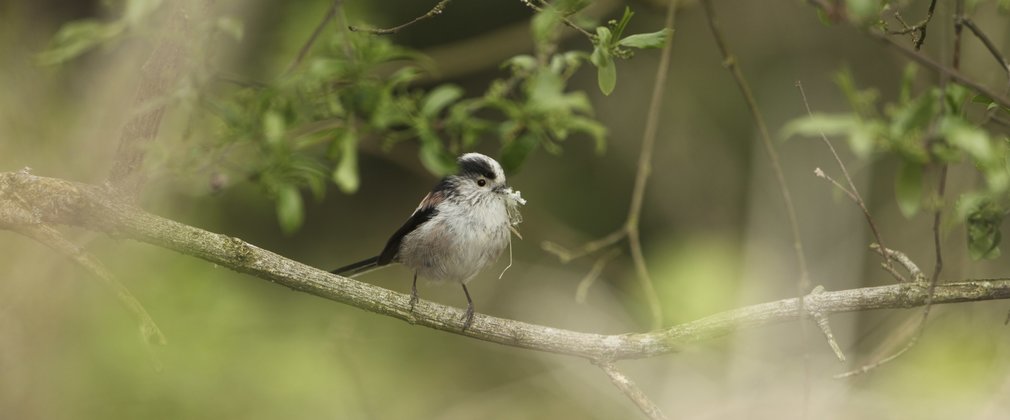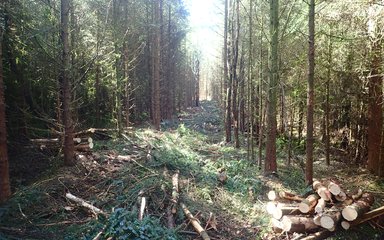
Why we harvest timber in spring
Our foresters care for the landscapes we manage and the wildlife that lives in them. We’re used to working with the rhythm of the seasons. We carefully balance the need for woodland management and sustainable timber with the year-round activity of wildlife. Our vision is that the nation’s forests will provide the most valuable places for wildlife to thrive and expand in England.
There is no risk-free time of the year to harvest timber. Working in the wetter, winter months risks causing long term damage to soils. Protecting soil is important for the whole forest ecosystem. This means we often need to work in drier conditions, which are more likely to fall within the bird breeding season.
Managing the risks
Before forestry work begins, we assess the site and consider what needs doing against the potential impacts on wildlife and the environment. To protect soils, tree roots and water quality, many areas of the forest can only be worked in the more seasonally drier months.
Different bird species have overlapping breeding seasons and some can nest in all months of the year. For example, crossbills and ravens nest as early as February, and woodpigeons breed throughout the year.
We do what we reasonably can to avoid disturbing or damaging birds’ nests. We also take extra care to look for wildlife that has special protection, including badgers, bats and rare or threatened birds. We either suspend or alter work to make sure this special wildlife is protected.
Sometimes we're asked why we don’t work more with hand-held chainsaws and protect soils by using horses to extract logs. We use this lower impact method in especially sensitive woodlands, but it brings its own risks. Although our staff and contractors are highly trained and skillful, using a harvesting machine with a protective cab is generally preferred because it is safer. There is also a limit to using horses.
Balancing the forest's benefits
Having taken precautions and balanced the risks, we accept some birds may still be impacted. Under the Wildlife & Countryside Act, it is legal to have destroyed a nest, egg or bird if it can be shown that the act was the incidental result of a lawful operation which could not reasonably have been avoided. The overall benefits of forest management to breeding bird populations outweigh the risk of any incidental impacts on individual birds.
Thinning and felling in woodlands creates habitats that support a wider range of species, including breeding birds. A lack of woodland management is a key cause of biodiversity decline across the country (State of Nature, 2019), so it is essential. Most of the forest is left undisturbed at any one time, and the period between management ensures that local wildlife has enough time to recover.

Related topics
Why we harvest timber
Timber is a renewable resource that helps tackle the climate crisis, locking up carbon from the atmosphere and can be a substitute for unsustainable, carbon intensive products. Every year we harvest over 1 million tonnes of sustainable timber and plant millions of trees. A year-round supply of homegrown timber is important and supports local economies.
By providing timber to the nation, we're reducing imports and demand on resources from countries where forests may not be responsibly managed. All our forestry work is independently audited every year against UK and international sustainable forest management standards.
How we protect wildlife
We care for some of the most valuable places for wildlife in the country through sustainable land management.
The nation's forests provide more than a quarter of a million hectares of habitat for wildlife, with 68,000 hectares of important Sites of Special Scientific Interest (SSSI). Over half of England’s rarest and most threatened species have been found in the nation’s forests, including 82% of priority birds for conservation.
Through our work, we support an abundance of species by providing rich, diverse and connected habitats. We're also returning missing species to our landscapes, including beaver, pine marten and sea eagles, and recovering vital ecosystems such as peatland, heathland and ancient woodland.
